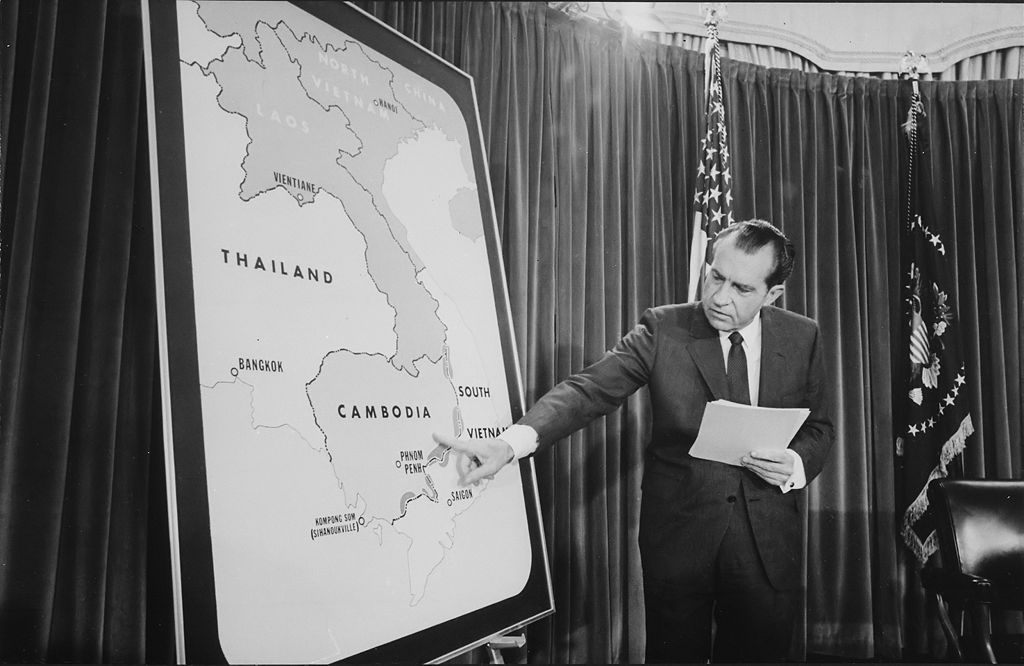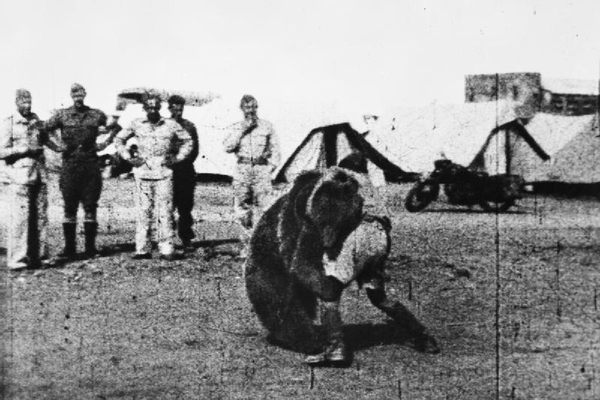The Myth of the Bamboo Pentagon: The Vietnam War’s Phantom Enemy Headquarters

(Image by Eric Grundhauser)
The Vietnam War had any number of controversial battles, but the invasion of Cambodia stands out—an unnecessary, bloody move that cost the lives of hundreds of U.S. soldiers on the ground and led to widespread rioting at home, including the Kent State tragedy.
Remarkably, a new book based on information from recently released documents confirms that one of the key rationales for this act was a mirage, a conspiracy theory. President Nixon had embarked on a mad hunt for the “Bamboo Pentagon,” a shadowy headquarters and command center from which the Communist forces were directing their side of the fighting. This is how Tim Weiner described it in his new book, One Man Against the World: The Tragedy of Richard Nixon:
The Joint Chiefs of Staff claimed to have located the enemy’s headquarters inside Cambodia — what the United States called the Central Office for South Vietnam, or COSVN. The chiefs envisioned it as a ‘Bamboo Pentagon,’ concealed beneath the jungle’s canopy. They thought that if you could blow up this central headquarters, you could cripple the enemy’s capacity to command and control attacks on U.S. forces in South Vietnam.
McCain said the United States should destroy it and win the damn war.
It was Admiral John McCain’s gung-ho assessment, given to a sleep-deprived, and desperate President Nixon, that served as a pinpoint to focus on in the increasingly obtuse politics of the situation in Vietnam. The reality of the situation was that the People’s Army of Vietnam and Viet Kong leadership was more compartmentalized and mobile, and it’s possible (even likely) that there never was any secret jungle complex. Regardless of this, Nixon ordered ground troops into Cambodia on April 29th, 1970.

“Maybe this “Bamboo Pentagon” is around here somewhere.” (Photo: National Archive/Wikipedia)
A total of 13 operations were conducted during the incursion, with American and South Vietnamese fighting against the People’s Army, the Viet Kong, and the Khmer Rouge. With domestic reaction to the Cambodian offensive deafeningly negative, the invasion was abruptly discontinued on July 22, 1970. (The first raid was called “Operation Breakfast”; with later missions of “Lunch”, “Snack” and “Supper” that went under the eventual name of “Menu”.) Nonetheless, Nixon crowed about the operation being one of the most successful engagements of the war since they were able to somewhat disrupt Communist power in Cambodia. Of course, this invasion also paved the way for the rise of the genocidal Khmer Rouge, who turned Cambodia into a horror show of torture during the late 1970s.
What the Cambodian campaign certainly did not do was locate the fabled Bamboo Pentagon. No evidence of the military evil lair was ever found. Some, though, continued to carry a torch for the place even after the war: Just because the Bamboo Pentagon was never found, that doesn’t mean something like it didn’t exist. In a declassified 1978 interview with Richard Helms, who served as Director of the CIA during the Vietnam War, he describes the quest for the Bamboo Pentagon:
“They were looking for but never found something called ‘COSVN’ which was the North Vietnamese Command of the forces in South Vietnam. The CIA had no illusions of a ‘bamboo pentagon.’ We knew that there was kind of a command structure which may have been no more than a General and two or three aides and maybe a table that moved from place to place, but you can’t run armies without communications and without a headquarters.
If President Nixon had kept the American troops in the area longer and really had cleaned it out, as the operation was designed to do, I think we would have found a lot more. But the operation started and then stopped suddenly and the troops withdrew because of domestic pressures in the United States. It is hard to say today that there was no headquarters in there just because we didn’t find it.”
It may never be known whether the COSVN ever existed as a military center underneath a jungle canopy or not, but the Cambodian invasion’s scars continue to be very real.












Follow us on Twitter to get the latest on the world's hidden wonders.
Like us on Facebook to get the latest on the world's hidden wonders.
Follow us on Twitter Like us on Facebook